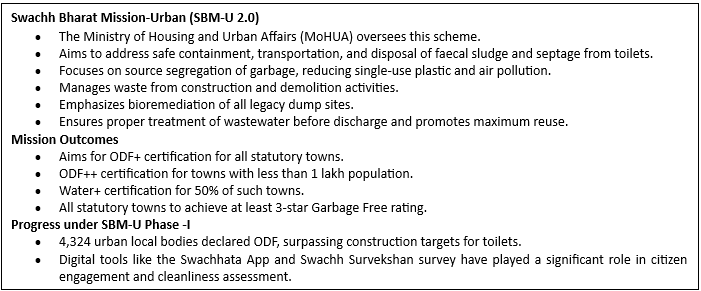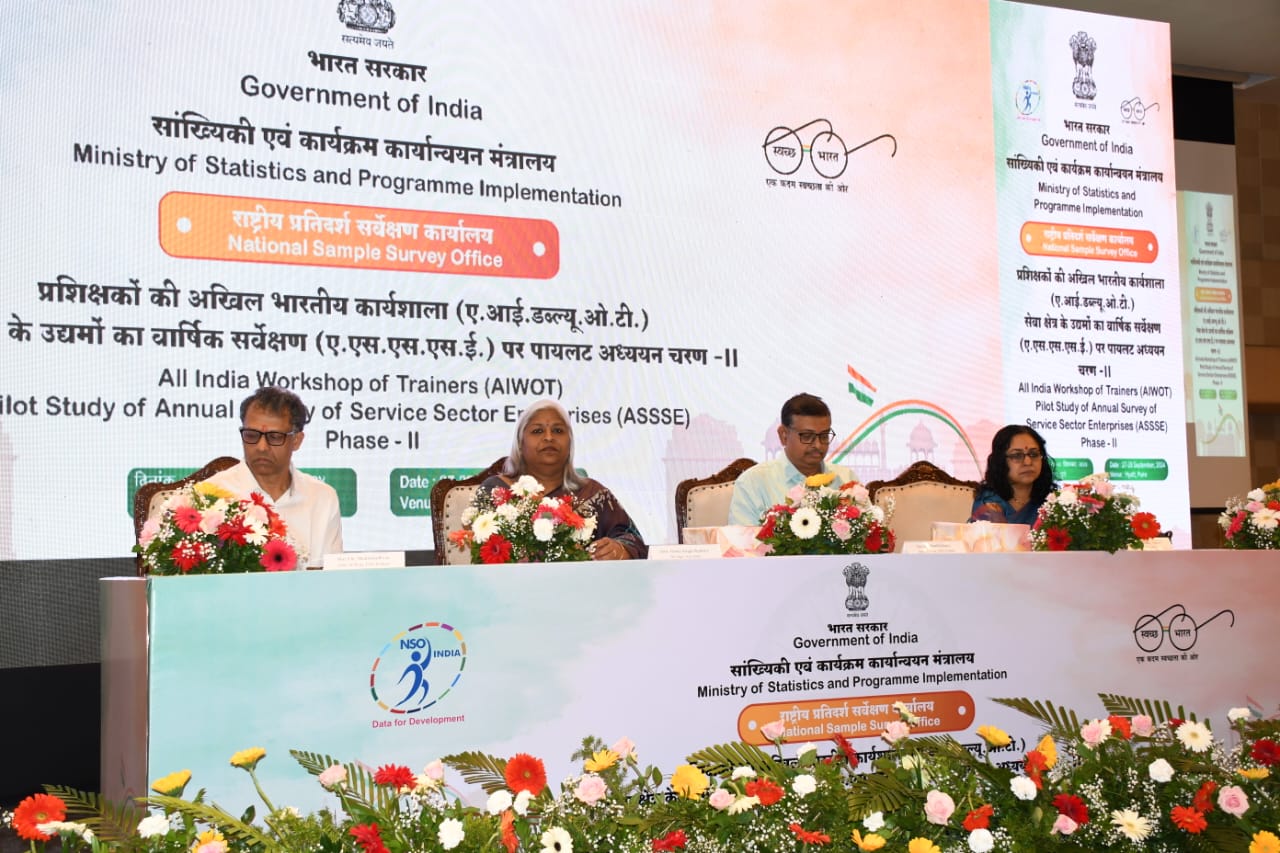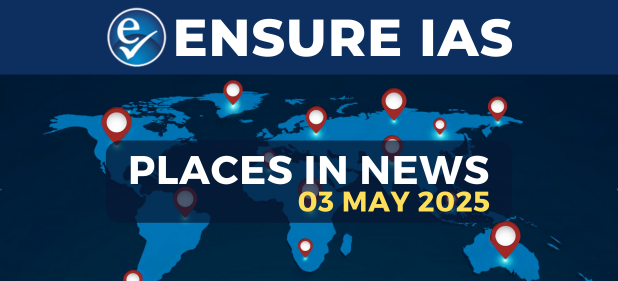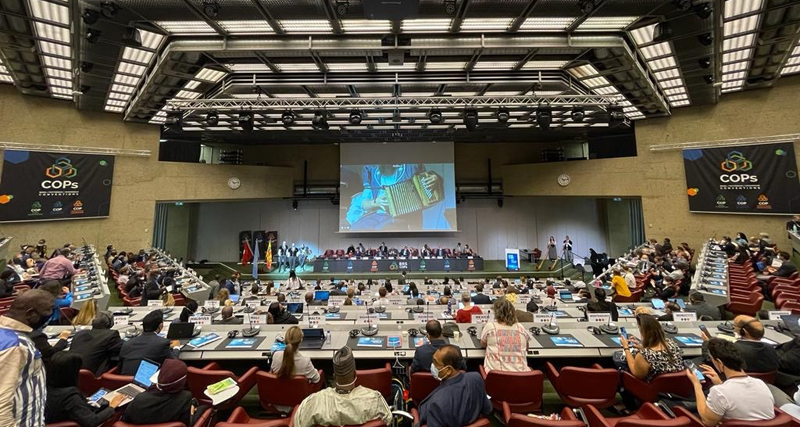- Courses
- GS Full Course 1 Year
- GS Full Course 2 Year
- GS Full Course 3 Year
- GS Full Course Till Selection
- CSAT
- 5 LAYERED ARJUNA Mentorship
- Public Administration Optional
- Online Program
- GS Recorded Course
- NCERT (Recorded 500+ Hours)
- Polity Recorded Course
- Geography Recorded Course
- Economy Recorded Course
- AMAC Recorded Course
- Modern India, Post Independence & World History
- Environment Recoded Course
- Governance Recoded Course
- Science & Tech. Recoded Course
- International Relations and Internal Security Recorded Course
- Disaster Management Module Course
- Ethics Recoded Course
- Essay Recoded Course
- Current Affairs Recoded Course
- ABOUT US
- OUR TOPPERS
- TEST SERIES
- FREE STUDY MATERIAL
- VIDEOS
- CONTACT US
STAR RATING PROTOCOL FOR GARBAGE FREE CITIES
STAR RATING PROTOCOL FOR GARBAGE FREE CITIES
01-01-2024
Context
- Ministry of Housing and Urban Affairs (MoHUA) launched the 'Star Rating Protocol of Garbage Free Cities- Toolkit 2022' on Good Governance Day (25th December).
- The Star Rating Protocol is a crucial governance tool for waste management.
Key Points
- The revised protocol simplifies the certification process, making it digital and paperless.
- New components like Information, Education & Communication (IEC), capacity building, and revenue from waste by-products aim to strengthen waste management ecosystems.
- In the recent certification exercise, nearly 50% of Urban Local Bodies (2,238 cities) participated, and 299 cities received certification. Ratings include 9 cities as 5-star, 143 cities as 3-star, and 147 cities as 1-star.
- Swachh Bharat Mission-Urban 2.0, launched in October 2021, focuses on creating "Garbage Free Cities" for holistic sanitation and waste management.
- The protocol is part of initiatives to make Swachh Bharat Mission-Urban (SBM-U) successful.
Parameters and Procedure
- The protocol relies on 12 parameters following a SMART framework – Single metric, Measurable, Achievable, Rigorous verification, and Targeted outcomes.
- Conditions are designed for cities to evolve into a model (7-star) city with progressive improvements in cleanliness.
- The framework assesses cities across 23 Solid Waste Management (SWM) components and is graded based on overall marks.
- Star Rating involves self-assessment and self-verification for a specific rating, ensuring citizen group involvement for transparent self-declaration.
- Independent third-party agencies appointed by MoHUA verify the self-declaration.
Significance
- The performance of cities under the Star Rating Protocol is crucial for their final assessment in Swachh Survekshan.
- Swachh Survekshan is the government's annual urban cleanliness survey.
- It ensures minimum sanitation standards through defined prerequisites.
- Conducted at a city level, the rating process facilitates incremental improvements in overall cleanliness.
- The rating protocol, an outcome-based tool, aids MoHUA and stakeholders in evaluating cities.
Garbage in India
- India produces the world's highest waste (147,613 MT per day as of January 2020) surpassing even China.
- Per capita waste generation in Indian cities ranges from 200g to 600g per day.
- Only 75-80% of municipal waste is collected, with just 22-28% processed and treated.
- By 2050, India's waste generation is expected to double, while China's growth will be slower.
Related Initiatives
- Open Defecation Free (ODF) Plus status.
- Swachh Bharat Mission.
- Solid Waste Management (SWM) Rules 2016.
- CSIR-CMERI's Municipal Solid Waste Processing Facility.




